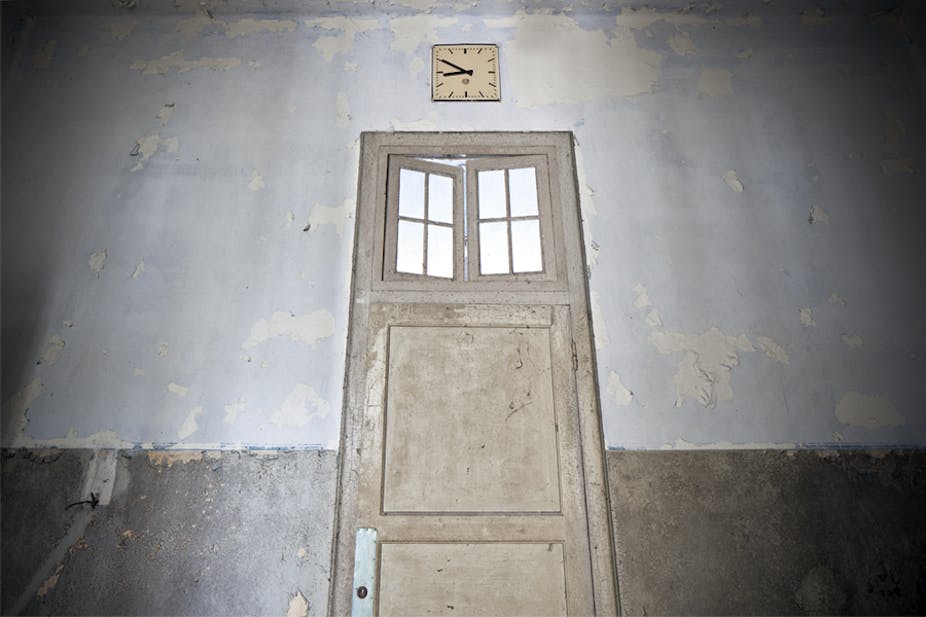While The Shock of the Fall, Nathan Filer’s recent Costa book winner, portrayed a system in which mental health staff spend too much time talking to other professionals rather than to patients, a report from the Care Quality Commission raised concern over the widespread use of blanket rules on mental health wards.
These bans include prohibiting the use of mobile phones or the internet, smoking and even access to outdoor spaces that were secure. In nearly half of cases, the reason given for these rules was “hospital policy”. Other reasons included historical incidents and in 13% of cases no-one actually knew.
That a significant number of people couldn’t say why these rules were in place but enforced them just the same raises the issue of power and how it can be abused, knowingly or unknowingly, in different ways in mental health.
1960s shift
Perhaps the most famous of the fictional portrayals of patients’ experience of mental health services is Ken Kesey’s One Flew over the Cuckoo’s Nest. Like Filer, who worked as a mental health nurse from 2004 to 2007 before embarking on a career as a writer, Kesey’s novel was based on his experiences as a nursing assistant on a ward in a large psychiatric hospital and the first edition of the book included sketches of patients Kesey had drawn while working on the wards.
The early 1960s saw a number of significant and highly influential works which had a similar theme: the questioning of power, particularly that of the psychiatric profession, and challenges to the supposed scientific neutrality of diagnosis and the dehumanising nature of the asylum regime. These works included The Myth of Mental Illness by Thomas Szasz (1960); The Divided Self by R.D. Laing (1960); A Study of Sanity and Madness by Frantz Fanon (1961); and Les Damnés de la Terre (prefaced by Sartre), which was later translated as The Wretched of the Earth by Michel Foucault (1961). Sylvia Plath’s The Bell Jar, which detailed the protagonist’s descent into mental illness, was published in 1963.
Writers such as Laing and Szasz were instrumental in producing shift in attitudes about people with mental illness. And Kesey, who had also famously been a volunteer in US forces experiments with LSD at the hospital he had worked, was a highly influential figure in the counterculture of the 1960s.
Even 60 years after its publication, One Flew Over the Cookoo’s Nest remains one of the most influential novels of the 20th century, strengthened by the 1975 film adaptation by Milos Forman starring Jack Nicholson. And the key theme of the novel is the struggle for individual freedom against a repressive society is a seminal text within the development of that culture.
In his famous Water Tower speech in 1961, health minister Enoch Powell committed policy makers to reducing the number of psychiatric inpatients bed by a half 50%, which he said would lead the closure of a number of asylums: “There they stand, isolated, majestic, imperious, brooded over by the gigantic water-tower and chimney combined, rising unmistakable and daunting out of the countryside – the asylums which our forefathers built with such immense solidity to express the notions of their day.”
In the 1960s, moves to tackle the abuses of institutional care were part of much wider social movements such as feminism and the struggle for racial and sexuality equality that challenged established structures. These movements have a common aim of claiming the basic rights of citizenship – legal, social and cultural – for all. In the legal world there has been progress but the huge stigma still attached to mental illness show these aims have yet to be fully realised.
A tale for modern times
In The Shock of The Fall, Matthew is 18 and suffering from a psychotic breakdown linked to the death of his younger brother in a childhood accident and the impact of grief is a key theme of the book. Matthew’s mother, in particular, is presented in subtle and moving ways. Matthew is tortured by his own role in the accident and guilt. But unlike the anti-hero McMurphy who rebels very openly against the system, the focus here is the way those around Matthew fail to understand the roots of his suffering.
The novel brings to life the landscape of despair: people at the margins, in poor housing, being supported by embattled staff with diminishing options but forced into a managerialist approach of risk assessment and bureaucratic care plans. Matthew finishes his memoir just in time as the day centre where he writes it is closed as part of a programme of spending cuts.
As a former social worker, I cringed with recognition as Matthew quietly shows the ways that professionals spent more time talking among themselves than they do to patients. And as Matthew observes, all the cups, stationery and pens on the ward where he is detained have been provided by drug reps, so they bear the names of the drugs the patients hate. This is a fact on mental health wards, not just fiction, and is just another of the many little ways where the needs of patients come second to other concerns.
Filer, who also penned a moving account of a friend who had a breakdown and was admitted to the ward where he used to work, is superb at showing the ways that the caring values at the core of social work and mental health nursing are compromised by managerialist speak of care plans and risk assessments. Instead we should turn towards a more human approach to mental health and against the stigma it still attracts.

